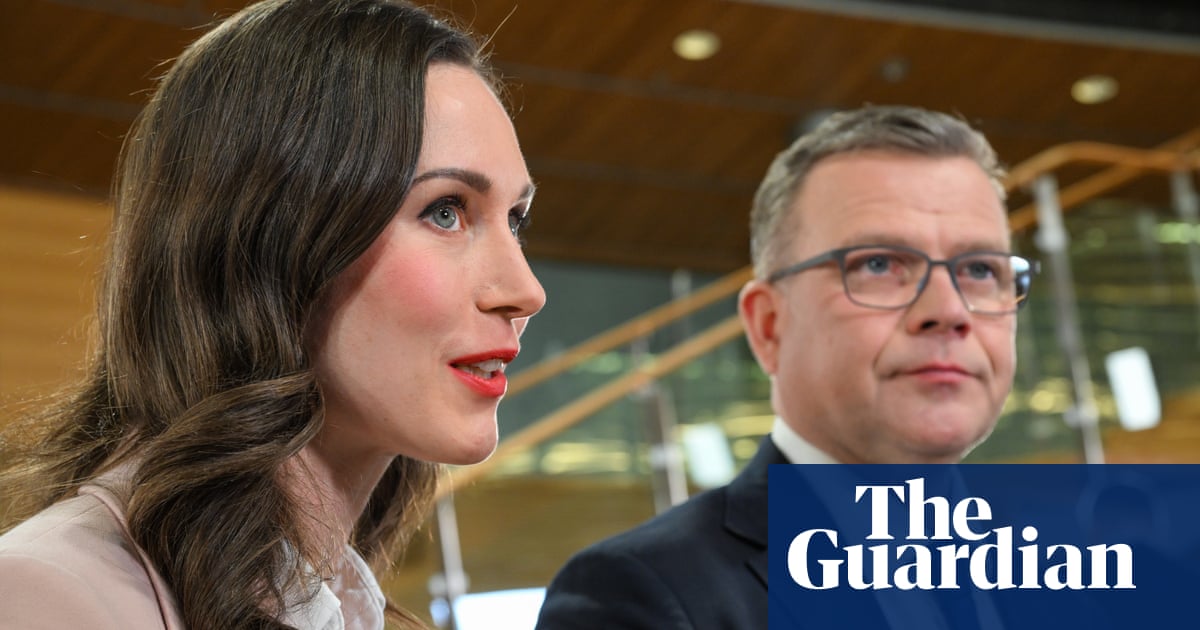
Sanna Marin was the most popular prime minister in Finland this century. She was praised for her handling of the Covid pandemic and led her country to join Nato with overwhelming support.
In Sunday’s election, her centre-left Social Democratic party (SDP) increased its vote share and number of MPs. Nonetheless, she and the SDP have been defeated – and Finland is moving to the right.
The leader of the conservative National Coalition party (NCP), Petteri Orpo, is likely to be the next prime minister. And while it is possible he will ultimately form a coalition with the SDP, he may first seek to form a government with the far-right Finns party, which had its best ever election result.
Why did Marin lose?
Not because of a leaked video of her dancing exuberantly that prompted a drugs test (she passed): while that story drew outsized international attention, neither it – nor the spurious subsequent questions about Marin’s character – have been a decisive feature of the campaign. “It made her fans more enthusiastic, and her enemies more critical,” says Jon Henley, the Guardian’s Europe correspondent. “At most, it accentuated the differences.”
By some measures, Marin and the SDP did pretty well: for a governing party to increase its vote share is unusual in Finland, and Marin’s personal popularity was a central part of their pitch to voters.
The SDP added three seats, but the NCP and the Finns gained 17 in Finland’s 200-seat parliament. Meanwhile, the vote for smaller parties in the left-leaning coalition collapsed.
While Russia’s invasion of Ukraine is a huge issue in Finland – and the reason behind its new membership of Nato – it was not a point of disagreement in the election. Instead, as Marin tacked to the left to shore up the SDP’s support, the right successfully leaned into concerns about Finland’s growing national debt and persuaded voters that it was time to cut social programmes to balance the books. “After the pandemic and the war, the economy has come back to the forefront,” says Henley.
Who is Petteri Orpo?
“I saw somebody tweet that the world has returned to its natural state of being unable to recognise the Finnish prime minister in a crowd,” Henley says. “He’s not a very charismatic character.”
But while Orpo is unlikely to achieve international political rock star status, he is seen as a moderate and experienced figure and is trusted on the economy. The 53-year-old has led the NCP since 2016, was deputy prime minister between 2017 and 2019, and has held several government ministries, winning praise for his handling of a tenfold increase in asylum seeker arrivals in 2015.
He has promised to cut spending on unemployment benefits and other welfare programmes in order to allow tax cuts. “He has been very clear that he won’t change tack on Russia – it was the first thing he said in his victory speech,” says Henley. “But the crucial question about the direction of his government is who he goes into coalition with.”
What will happen next?
Under Finland’s proportional representation system, the largest party gets the first chance to seek to form a government, a process that could take weeks. Orpo will send out questionnaires to other parties this week to scope out space for an agreement. He is expected to start by seeking the support of the Finns, the far-right party whose popularity was bolstered by worries over inflation and claims excessive non-EU immigration was to blame for the problem.
The Finns’ route into government is not straightforward, though. Two possible coalition partners, the Greens and the Centre party, ruled out entering any coalition on Monday, the Helsinki Times reported. Other smaller parties have said they would not join a coalition of which the Finns are a part, while more moderate backbenchers in Orpo’s own party have reservations about making concessions to them.
after newsletter promotion
“The NCP and the Finns agree vaguely over the economy,” says Henley. “But they have massive ideological differences over Europe, climate change and migration.”
It is possible that Orpo will turn to Marin and the SDP – but that coalition would still require support from two other smaller parties for even a majority of a few seats. “Whichever way Orpo turns, forming a government is going to be tricky,” says Henley.
What does this tell us about the direction of travel across Europe?
The result “reflects something that looks like it’s becoming a general trend”, says Henley. “The right did well in Sweden last year, and it looks like they will in Spain and Poland this year. It’s about post-pandemic worry and the economy trumping everything else.”
At the same time, classic centre-left parties are seeing their vote share hold up above disastrous levels, “but that has to be put in the context of where they were a decade ago”, says Henley. “They have about half the support they did.”
That’s part of a general tendency for European politics to fragment – though the impact of this phenomenon is somewhat masked in the UK and US by their first past the post electoral systems.
“There are 10 parties in the Finnish parliament now; there are 13 in the Netherlands,” says Henley. “The big parties of centre-left and centre-right which dominated politics after the second world war are no longer in that position. And it seems like their ability to reverse that trend is limited.”
"lose" - Google News
April 04, 2023 at 06:15PM
https://ift.tt/dJDA2bl
Why did Sanna Marin lose Finland’s election? | Finland - The Guardian
"lose" - Google News
https://ift.tt/sGt9WPF https://ift.tt/PqSi3lA
Bagikan Berita Ini














0 Response to "Why did Sanna Marin lose Finland’s election? | Finland - The Guardian"
Post a Comment